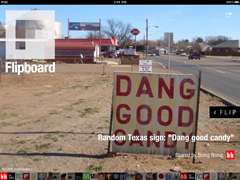 The New York Times today announced it is embarking on a program which will make its content available through various third-party services, starting with iOS (and, since last week, Android) social media aggregator Flipboard. The program will make all NYT content available to subscribers via login validation, while a selection of articles will be available free to everybody.
The New York Times today announced it is embarking on a program which will make its content available through various third-party services, starting with iOS (and, since last week, Android) social media aggregator Flipboard. The program will make all NYT content available to subscribers via login validation, while a selection of articles will be available free to everybody.
New York Times webmaster Denise Warren said that the paper had embarked on the program after realizing 20% of its subscribers use third-party software like Flipboard to read content, and saw it as an opportunity to enable additional functionality for paying subscribers.
Meanwhile, other magazines such as Wired and the New Yorker are doing the opposite—ending their advertising relationships with Flipboard and cutting back on the amount of content displayed on the app, after just eleven months of advertising partnership. The magazines feel they would rather stop driving users to third-party sources and instead sell more ads on their own sites.
"Wired is pulling back," said Howard Mittman, VP and publisher at the magazine. "Our intention is to adapt our model to allow Flipboard users to know what content at Wired is out there. It will have a headline and a sentence leading to a URL. If digital consumers want to interact with Wired, they can do so at Wired.com and not through an intermediary."
Of course, that won’t stop people who really want to read the content without being bothered with loading up a whole webpage. Just as easily as they could click through, they could also send the link to Instapaper or some other readability/aggregation app.
As for the NYT, it’s really an odd reversal of position. Let’s not forget that it was the New York Times who got upset about RSS reader application Pulse featuring the RSS feed of material that the Times itself explicitly made publicly available for free. Now they’re suddenly wanting to spread their content out to third-party services, at the same time other magazines who were doing it are pulling back?
Regardless, it does provide more proof of what I’ve said before: Flipboard really does provide exactly the kind of experience that tablet magazine readers want. And smart papers like the New York Times (or, for that matter, Rolling Stone) are realizing it.
































We already use NYT app as subscribers so what would be the point of doing it through Flipboard? Strange move.